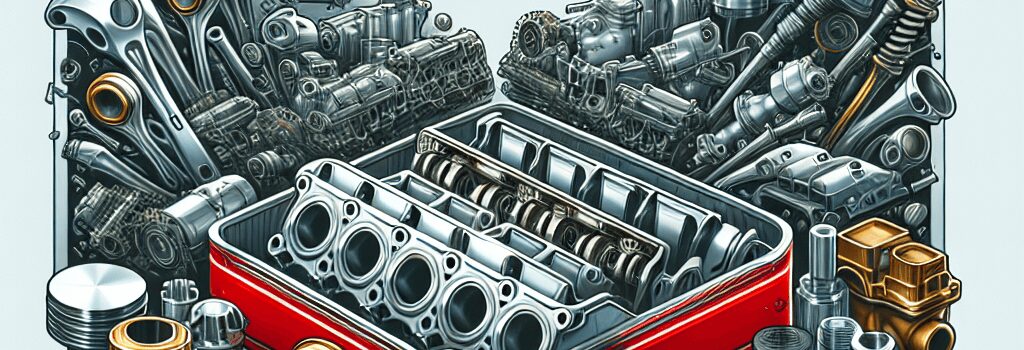Honda Auctions Historic Racing Parts, Including Senna’s V10

Honda Racing Corporation (HRC) is venturing into a new business frontier by releasing some of its most coveted motorsports memorabilia for auction. In a bid to share the rich legacy of Honda’s racing heritage, the company announced that parts from its iconic RA100E V10 engines – the same powerplants that propelled McLaren to the pinnacle of Formula 1 in 1990 with legends Ayrton Senna and Gerhard Berger – will soon be available to collectors. The initiative is set to debut during Monterey Car Week, ensuring that enthusiasts worldwide have the chance to own a piece of racing history.
A Deep Dive Into the RA100E V10 Engine
The RA100E engine series was engineered to push the limits of performance. With a displacement of 3.5 L and built using advanced aluminium alloys and high-tensile steel components, these engines featured state-of-the-art camshafts, pistons, and conrods that were optimized to withstand extreme racing conditions. Each component from Senna’s and Berger’s engines not only symbolizes raw power and precision but also represents decades of innovative design in engine management and high-performance computing. Technical analysis suggests that the intricate balance of weight reduction and robust power output were key factors that contributed to McLaren Honda’s remarkable 1990 Formula 1 season.
Expanding the Memorabilia Collection
Beyond the RA100E parts, HRC is also sifting through its extensive archives for additional treasures. This expansive collection includes historical IndyCars, MotoGP bikes, and other heritage machines that illustrate Honda’s ongoing commitment to racing excellence since the 1950s. Collectors will have the opportunity to purchase not just isolated components, but certified complete assemblies accompanied by detailed provenance documentation and display cases, ensuring that each item is preserved as a genuine artifact of motorsport ingenuity.
Expert Analysis and Market Impact
According to industry experts, the decision to liquidate these historic parts at Monterey Car Week is a signal of Honda’s strategic move to tap into the lucrative memorabilia market. With the auction attracting elite collectors and high-net-worth individuals, the price tags are expected to reflect the historical and technical significance of each piece. Experts also highlight that by offering these rare components, Honda is bridging the gap between technical innovation and collector culture, creating a dynamic interplay between the automotive aftermarket and vintage racing heritage.
Engineering Innovation Meets Collector Culture
In a statement, Koi Watanabe, president of HRC, noted, “We aim to make this a valuable business that allows fans who love F1, MotoGP, and various other races to share in the history of Honda’s challenges in racing since the 1950s. Including our fans to own a part of Honda’s racing history is not intended to be a one-time endeavor, but rather a continuous business that we will nurture and grow.”
Alongside its high-profile auction, the move has sparked discussions about the role of engineering innovation in the modern collector economy. With digital platforms and e-commerce channels expanding access to memorabilia—from multi-million-dollar auction houses to budget-friendly online vendors—there has been a significant democratization of automotive collectibles. Notably, some enthusiasts have already mentioned affordable alternatives accessible via links to vendors on platforms like Etsy, suggesting that beyond the high-end auction scene, authentic F1 components can be enjoyed by a broader audience.
Latest Trends in Motorsports Memorabilia
- Digital Verification: The inclusion of certificates of authenticity paired with blockchain-based verification methods is becoming common to authenticate items and ensure transparency in provenance.
- Hybrid Collector Ecosystem: With both physical auctions and online sales booming, collectors are increasingly using data analytics and virtual viewing rooms to assess the true value of rare parts.
- Engineering Insights: New technical publications and symposiums focus on the detailed deconstruction of historic components, explaining the design and manufacturing evolution that shaped the performance of engines like the RA100E.
Future Outlook and Legacy
The auction is not only a celebration of motorsports history but also a glimpse into how technological innovation translates into tangible legacy pieces. With increasing interest in preserving and appraising the engineering marvels of past eras, Honda’s memorabilia initiative may inspire similar programs from other historic brands. The blending of high-end technology, collectible art, and heritage appreciation creates a multidimensional market that is likely to influence both the future of racing and the second-hand market for proprietary components.
Whether you are a devoted motorsports aficionado or an engineer fascinated by the science behind legendary performance, this initiative by Honda opens up new channels for engagement. By bridging the gap between performance engineering and collector culture, Honda is not just selling parts – it’s selling a piece of history that continues to inspire innovation.